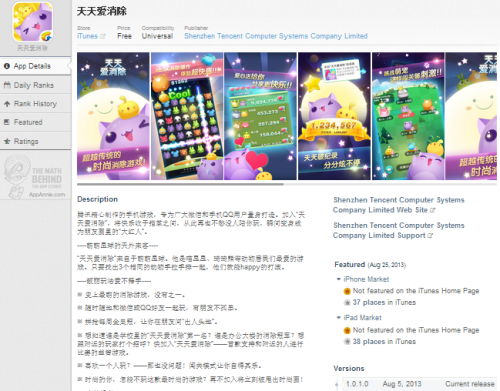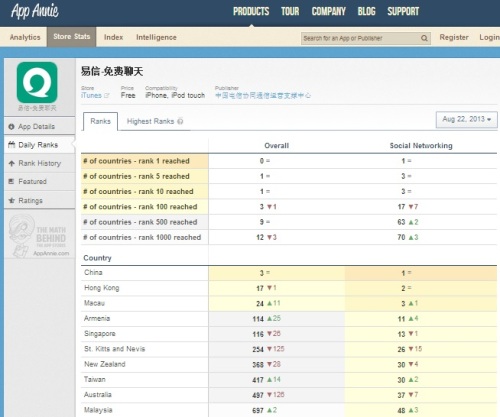Getting to grips with social media in China means learning new platforms and methods of communication. But it’s a good way to build a brand, because the Chinese have a high level of trust in the Internet.
A foreign brand wishing to successfully launch its own products in China should absolutely benefit from the great potential offered by the Chinese social media.
According to the China Internet Network Information Center (CNNIC), in 2012 the Chinese regularly using the internet were 564 million (42% of the population), with a 10% increase in comparison with the previous year. The Chinese Ministry for Industry and Information Technology has estimated that within 2015 there will be over 800 million Chinese users on the internet, i.e. the total of the inhabitants of the United States plus the European continent.
Why the Use of Social Media in China is more important than anywhere
Social media and search engine optimization is different in China. The same presence of social media marketing than the rest of the world won’t work. Having a social media presence is essential: a social media presence in China is a basic marker of legitimacy that reassures the consumer, when needed, that the brand is real and established. In China, online sources of information play a much larger role for consumers in China than they do in many more established markets.
Social Media in China are the most influential and interesting media for Chinese consumers, who believe what they see on the internet far more than they do in a newspaper, magazine, radio or television.
A Need for a Specific Marketing Strategy for China
Social media in China have a feature that is unique in the world: they are different from other countries. Global social networks like Facebook and Twitter are blocked and can only be accessed through VPN technology.
Even though Chinese users don’t have access to all American social media, they have at their disposal at least a dozen of virtual networks made in China and quite innovative compared to the United States.
Many foreigners are still making the mistake of licensing contents in English and not in Chinese. It is enough to do a search on Baidu (or Qihoo) or on Soku (main video search engine) to realize how ineffective is a strategy that does not aim directly at the use of Mandarin.
A strategic figure for an efficient promotion is the local community manager, a Chinese person expert in social networks who has the object to make the uploaded contents dynamic: she/he establishes relationships, creates debates, moderates forums, acquires information, and delivers contents from the official accounts opened on all social media.
In China the social networks are mostly … Chinese
Compared to many countries, Chinese Internet users mostly communicate with national services and not American services like most of the rest of the world.
“QZone” is a very popular social net created in 2005 by Tencent Holdings, the firm of the most popular program for instant messaging in China: QQ. the service allows users to use avatars, write blogs, keep a diary, send photos and listen to music. At present over 600 million accounts are active.
“SinaWeibo” known as “Weibo” is the major Chinese website of micro-blogging, a kind of hybrid between Twitter and Facebook. With around 500 million accounts, 2 million of daily issues and 100 million of messages each day, it is the most visited social network in China after QZone (including QQ). On Weibo a public opinion has formed over time, which, having no other platforms where to express itself, brings its requests onto the Internet concerning themes such as TV shows, entertainment but also issues like pollution, and food safety, often with results.
WeChat (called Weixin in China) is lately one of the most successful platforms. It is a mobile application of Tencent, launched at the beginning of 2011 and it is the first web application created for the Chinese market, but available in English since 2012. Presently, it has reached over 400 million registered accounts, and internationally it has 100 million users (of which a few millions are Chinese overseas and including mostly Malaysia and India). Competitor Sina launched a similar application called “Wemeet” (Weimi) and China Telecom with Netease “Yixin”.
Renren is a social network created in 2005 with a style similar to that of Facebook. Currently it has more than 200 million accounts and it is visited mostly by university students and people under 30 living in the first- and second-level.
It is also worth mentioning other social networks like Pengyou (150 million accounts), Kaixin001 (100 million accounts), Douban (100 million accounts) and DianDian (5 million users).
In China there are also different types of video sharing websites (Youtube is blocked).
The most important one is Youku.com with 30 million single visitors each day (second in the world only to Youtube.com), visited in particular by young people and graduates living in the first- and second-level cities. The second most popular video sharing website is Tudou.com, which merged with Youku in March 2012, creating Youku Tudou Inc. At present Tudou.com has currently 18 million single daily visits and about 100 thousand videos are uploaded every day.
The third most popular one is 56.com with 10 million single visitors each day.
What type of Social Media should you use?
A good example with wines from Provence
We heard about the strategy of wines from Provence: it is a good example.








You must be logged in to post a comment.